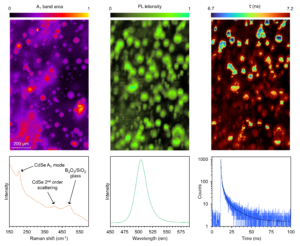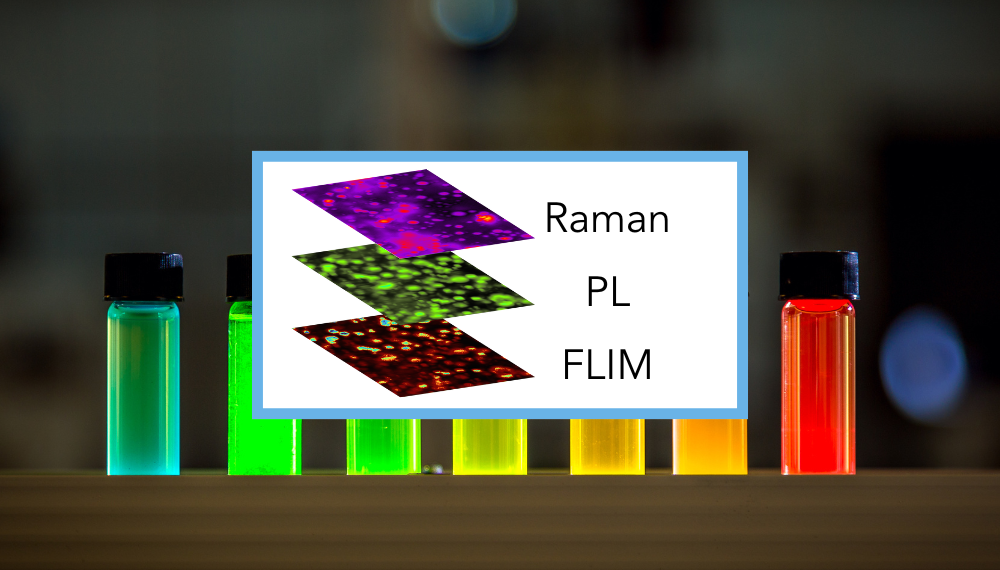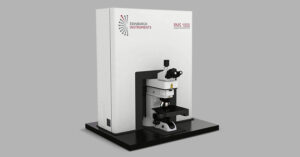
Quantum dots (QDs) are nanoscale semiconductors with unique optical properties. Researchers can employ techniques like Raman spectroscopy, photoluminescence (PL) spectroscopy, and fluorescence lifetime imaging microscopy (FLIM) to delve deeper into their properties. With the Edinburgh Instruments RMS1000, it is possible to perform all imagine modes in the same software package on the same area or volume within a sample.
Raman spectroscopy: This technique provides insights into the vibrational modes of QDs. By analysing the Raman spectrum, researchers can determine the QD’s chemical structure and the nature of any surface alterations.
PL spectroscopy: PL reveals information about the energy levels, bandgap, and quantum confinement effects within the QDs.
Fluorescence Lifetime Imaging Microscopy (FLIM): FLIM maps the fluorescence decay time of QDs, which is influenced by factors such as the local environment and interactions with other molecules. This technique is useful for studying biological processes and QD-based sensors.
By combining these techniques, it is possible to gain a comprehensive understanding of QD properties and their potential applications in various fields, including optoelectronics, bioimaging, and solar cells.

